Trees Birds Mammals Fish Amphibians Reptiles
Wild Algarve
Bookshop
Russula aurea Pers. - Gilded Brittlegill
Phylum: Basidiomycota - Class: Agaricomycetes - Order: Russulales - Family: Russulaceae
Distribution - Taxonomic History- Etymology - Identification - Culinary Notes - Reference Sources
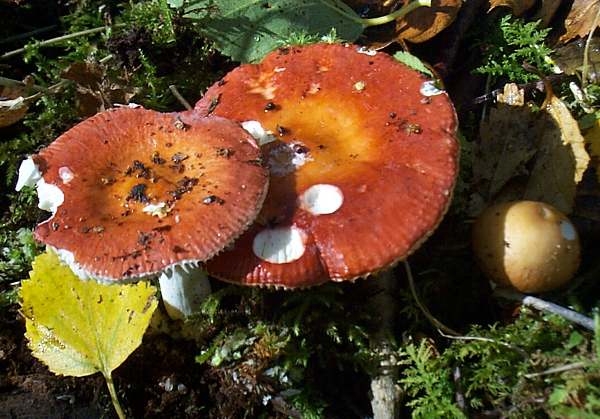
Russula aurea (syn. Russula aurata) is an occasional species under
broad-leaf trees; it is mainly found occasionally under spruce trees. This attractive brittlegill is a delight when you come across it in perfect condition. Good specimens are rare because slugs just love them.
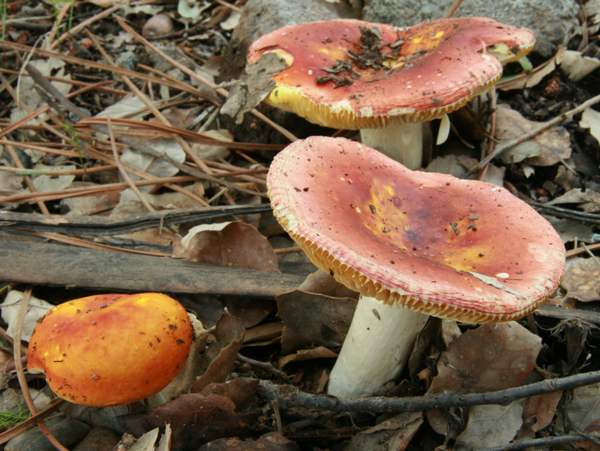
Distribution
An infrequent find in Britain and Ireland, the Gilded Brittlegill is more common on mainland Europe especially in southern countries.
Red or orange brittlegills are difficult to identify with certainty, but Russula aurea has the almost unique characteristic of
developing a golden-ochre coloured stem when fully mature.
Taxonomic history
English botanist William Withering (1741 - 1799) described this mushroom in 1801 and named it Agaricus auratus. (Vast numbers of gilled fungi were dumped into the Agaricus genus in the early days of fungal taxonomy; most have since been moved to other genera leaving in the present-day Agaricus genus a much smaller number of the 'true mushrooms'.)
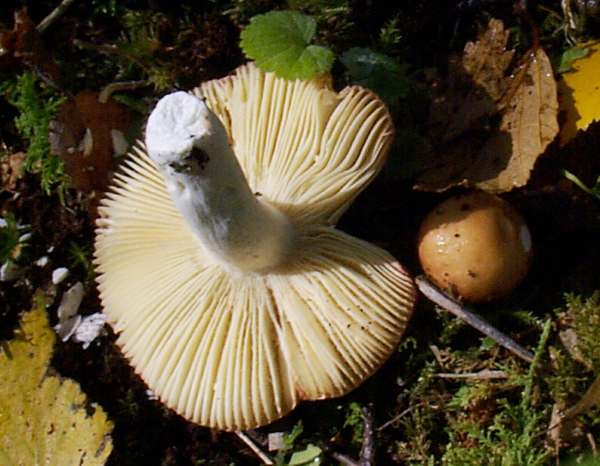
The Gilded Brittlegill was transferred to the Russula genus in 1838 by the great Swedish mycologist Elias Magnus Fries and it took on the name Russula aurata (With.) Fr.; however, the name Russula aurea already existed, having been established in 1796 by Christian Hendrik Persoon, and under the ICBN rules this name must take precedence.
Synonyms of Russula aurea include Agaricus auratus With., and Russula aurata (With.) Fr.
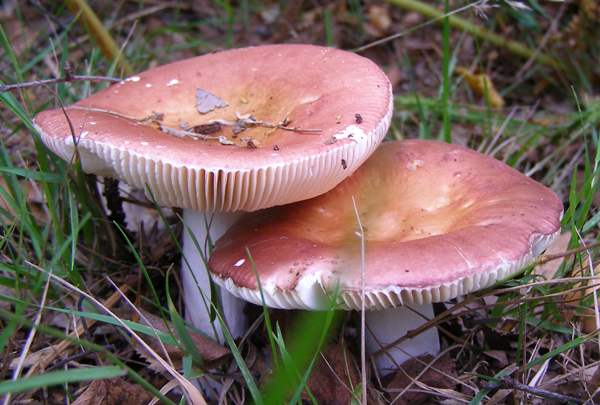
Etymology
Russula, the generic name, means red or reddish, and indeed many of the brittlegills have red caps (but many more are not, and some of those that are usually red can also occur in other colours!). The specific epithet aurea means golden.
Identification guide
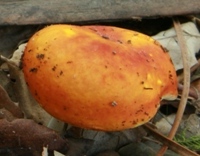
|
Cap
4 to 9cm in diameter, the caps are spherical
at first, becoming convex and then flattening and often with slightly
depressed centres.
Mixtures of yellow and orange or occasionally blood red, often with a golden tinge especially in the
centre, the cap cuticle easily peels
1/2 to the centre. |
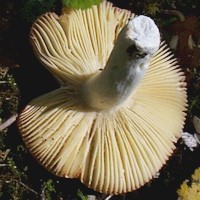
|
Gills
Adnexed or free, the moderately crowded broad
gills are pale ochre, sometimes flushed golden yellow, especially at tthe gill edges; darkening slightly as the fruitbody ages.
Stem
10 to 25mm in diameter and 4 to 9cm tall, the brittle stems are white at first
but becoming golden-yellow with age. There is no stem ring. |
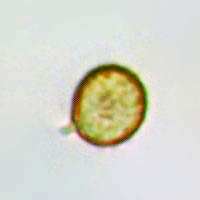 |
Spores
Globose to slightly ovoid; 7-10 x 8.5-9µm; warts 0.5 to 0.7µm tall linked in a partial reticulum (network).
Spore print
Deep ochre. |
Odour/taste |
No significant odour; mild taste. |
Habitat & Ecological role |
In broadleaf woodland. In common with other members of the Russulaceae, Russula aurea is an ectomycorrhizal mushroom. |
Season |
August to October in Britain and Ireland; several weeks later in the Mediterannean region. |
Similar species |
Russula paludosa is a red species that sometimes has an
orange tinge to its cap, but the stem remains white or pale pink
rather than turning golden yellow. |
Culinary Notes
The Gilded Brittlegill is an edible mushroom, but it is unusual to find
sufficient in one location to justify collecting them.
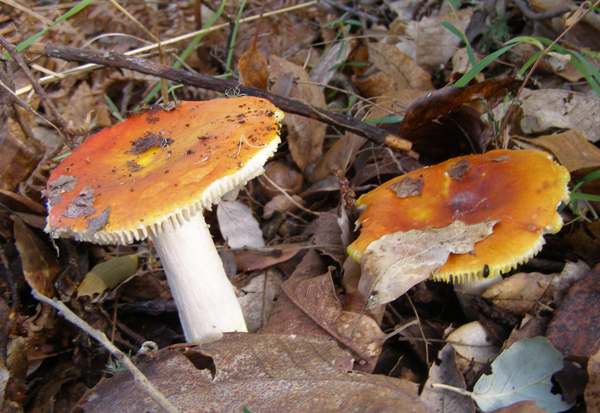
Reference Sources
Pat O'Reilly (2016). Fascinated by Fungi, First Nature Publishing
Geoffrey Kibby (2011).The Genus Russula in Great Britain, published by G Kibby.
Roberto Galli (1996). Le Russule. Edinatura, Milan.
Paul M. Kirk, Paul F. Cannon, David W. Minter and J. A. Stalpers. (2008). Dictionary of the Fungi; CABI.
Taxonomic history and synonym information on these pages is drawn from many sources but in particular from the British Mycological Society's GB Checklist of Fungi.
Top of page...
Fascinated by Fungi. Back by popular demand, Pat O'Reilly's best-selling 450-page hardback book is available now. The latest second edition was republished with a sparkling new cover design in September 2022 by Coch-y-Bonddu Books. Full details and copies are available from the publisher's online bookshop...